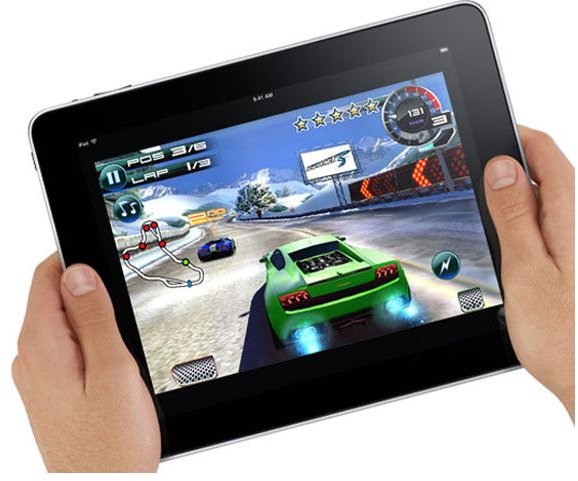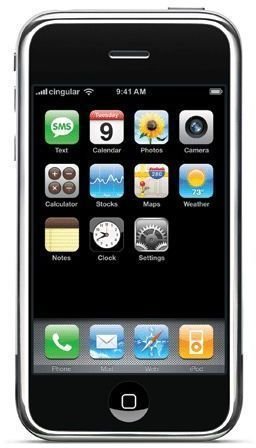Apple Devices: iPhone, iPhone 3G and the iPhone 3GS
An Apple Life
If you’ve ever walked into an Apple Store and just took in your surroundings, chances are good that you’ll notice their product lines revolve mostly around 4 products – the Mac (and its many iterations), the iPod Touch, the iPhone, and the iPad. For the mobile devices in that group, how should they fit into your life?
The iPhone
For those living in a cave for the past three years, the iPhone is a revolutionary smart phone developed by Apple that came out in 2007. I say “revolutionary” mostly because of the interface the phone brought with it, a dazzling display of user-friendliness that extends to every corner of the OS. The iPhone works on a system of “apps”, which are self-contained programs that run one-at-a-time inside the OS. For the most part, the later generations of the phone (the iPhone 3G and the iPhone 3GS) are “zippy” in the sense that they function quite well without multitasking - a feature Apple has only recently announced for the smartphone. As a phone, it works on AT&T’s network, a point of contention amongst those that live in higher population density areas of the US where the network isn’t up to par.
Initially sold at an MSRP of about $500, the iPhone has dropped in price as a result of the subsidization by AT&T to attract new customers. Like any other product, it is not without its faults, among these, the severe lack of flash on the platform. Apple has a very closed-minded approach to developing apps, leading several writers to call the app store (a main selling point of applications for the phone) a “walled-off garden”. This closed platform issue has led to users taking matters into their own hands and performing what is known as a “jailbreak”, a way to get around the iPhone’s limitations by installing 3rd party applications that unlock the full potential of the phone, allowing the user to do everything from customizing the lock-screen on the phone to allowing 3G connections to download whatever the user may want (unlike the normal iPhone that uses software as a counter-measure to this). The iPhone was the first product in this new mobile line Apple started in 2007, which eventually led to the production of…
The iPod Touch

Following the iPhone, Apple decided that users who didn’t want to pay a monthly fee should be able to have access to the same great platform found on the iPhone. To this end, they released a slightly-less-revolutionary product that was simply a smaller and skinnier iPhone without the telecommunications chip found in the iPhone (be it an EDGE chip or 3G). The iPod Touch occupies a very specific niche that Apple itself has nearly destroyed with the introduction of a phone that’s also an amazing music player. With the advent of the iPhone, it’s hard to justify the iPod Touch’s existence at an un-subsidized price of $200.
The iPod Touch, like the iPhone can be jailbroken. This has led to several problems for the iPod Touch from Apple’s point of view – namely, since the phone is just a music player that can run iPhone apps, the jailbreak apps provide the opportunity to pirate legitimate apps. This piracy issue is especially prevalent in the gaming apps on the iPod and iPhone because of a pricing structure that is continuously variable. For example, a game on the iPhone could cost $15 on Monday and by the time Thursday rolls around it’s $0.99 in order to start a huge sale. The biggest hurdle to app sales on the phone and iPod are that they are unannounced and, often times, pass by without notice. As a whole, the iPod Touch is only in a “sweet spot” in terms of its niche for those parents that want to give their children iPods but not smartphones with an expensive $30-a-month plan. Following up the success of the iPhone and iPod Touch, Apple unveiled their latest product this January…
The iPad

To call the iPad “polarizing” and “polemic” may very well be an understatement. The iPad was long thought to be mythical, an Apple “tablet” that would revolutionize the way we use the internet and think about computers. In reality, the iPad was revealed to be simply a larger iPod Touch with a faster processor and some more work-related applications. The screen is much larger than either the iPhone or the iPod Touch, boasting a semi-impressive 1024 x 768 pixel count.
The real star of the iPad is the new Apple A4 processor, which was almost exclusively the reason people were excited about the new iPad, because if cards were played correctly, the new chip would soon be found in the iPhone, a device that could benefit from a complete “refresh” in order to attract even more customers and bring back customers whose contracts are expiring. As a device, the iPad sits in a “niche” that is hotly debated. There are those that believe the iPad will usher in a new era of “magical” computing, whereas others see it as an overpriced and overhyped iPod Touch XL. Like any good Apple product though, the device has already sold a large quantity of units and may become a much better device in the second iteration including at least a camera and other necessary portable computing essentials that seem purposely removed from the device for the first generation.
